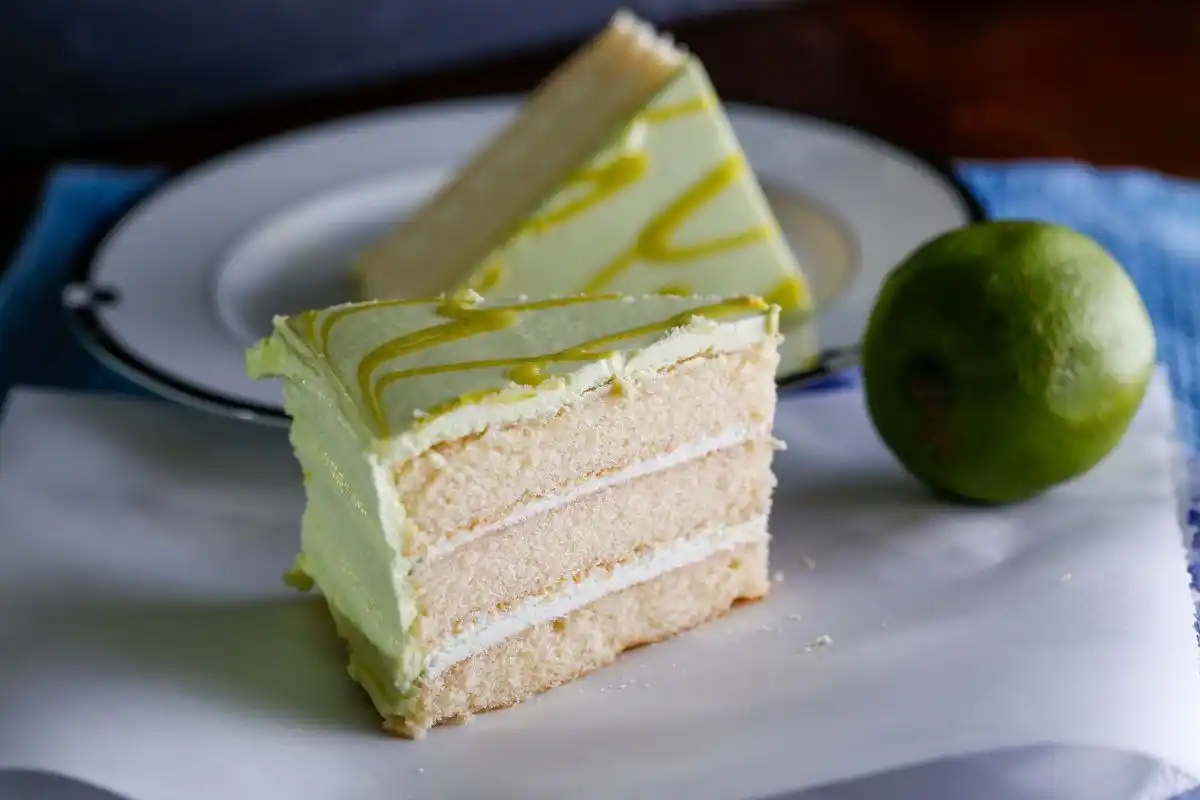
Explore the vibrant world of key lime cake, a dessert renowned for its sharp, tropical flavor and sweet, tender crumb. This guide covers everything from the dessert’s rich history to practical tips on creating it. Whether you’re an experienced baker or just starting, get ready to bring a burst of sunshine into your kitchen with our thorough guide to crafting the perfect key lime cake.
Introduction to Key Lime Cake Key Lime Cake
Key lime cake, often seen as the cakey cousin to the famous Key lime pie, is more than just a dessert. It’s a vibrant celebration of key limes, those small, aromatic citrus fruits that pack a punch far above their weight. Originating from the tropical groves of Florida, this cake variant brings a refreshing twist to any table it graces.
Importance of Key Lime in Culinary
Key limes are notably different from their larger, more common relatives. They are valued for their intense aroma and the distinct tart flavor they impart, which makes them not only a baker’s favorite but also a versatile ingredient in many tropical flavors. Their juice is more aromatic, often described as floral and robust, which is why it’s the star in the iconic Key lime pie and, of course, our beloved cake.
The culinary importance of key limes extends beyond taste. They represent a rich heritage of subtropical farming in the U.S., particularly in the Florida Keys, where they are most famously grown. The fruit’s peak season adds to its allure, making key lime cake a summertime favorite. However, the demand for this zesty fruit makes it a sought-after commodity all year round.
With every bite of key lime cake, you’re not just enjoying a delicious dessert; you’re experiencing a piece of culinary history. This cake isn’t just about indulging in a sweet treat; it’s about embracing a burst of summer any day of the year. Whether it’s a holiday dessert table or a simple family gathering, this cake brings a touch of sunshine and a taste of the tropics, making every occasion a bit more special.
Stay tuned as we delve into the essential ingredients and handy substitutions that can help you whip up the perfect key lime medicine in the next section of our article.
how to make a key lime cake?
Key Ingredients for Key Lime Cake
Creating the perfect key lime cake starts with understanding the key ingredients that go into it. Each component plays a crucial role in building the cake’s distinctive flavor and texture.
- Key Lime Juice and Zest: At the heart of this recipe is the key lime itself. The zest adds a bright, citrusy punch, while the juice imparts that unmistakable tangy flavor. Remember, using genuine key lime juice is pivotal for achieving the authentic taste.
- All-purpose Flour: This is the foundation of the cake, giving it structure and softness. While specialty flours can be used, all-purpose flour works best to create a tender crumb in this recipe.
- Butter and Oil: A combination of butter for richness and oil for moisture ensures the cake remains moist and flavorful, even when chilled.
- Sugar: Granulated sugar not only sweetens the cake but also helps in achieving a golden-brown crust when baked.
- Eggs: They bind the ingredients together and contribute to the cake’s fluffiness.
Substitutions for Key Ingredients
Not everyone has access to fresh key limes or prefers to use specific ingredients due to dietary restrictions. Here are some clever substitutions that can still yield a delicious key lime cake:
- Lime Juice: If key limes are not available, regular lime juice can be used. It won’t replicate the exact flavor but will still provide a citrusy zest.
- Gluten-Free Flour: For those avoiding gluten, a gluten-free all-purpose flour mix can be a direct substitute in the same measurements.
- Vegan Options: To make a vegan key lime cake, replace the eggs with a flaxseed mixture (1 tablespoon ground flaxseed with 3 tablespoons water per egg) and use vegan butter and plant-based milk.
These substitutions allow more people to enjoy a slice of key lime cake without compromising on taste or their dietary needs. By tweaking a few ingredients, this cake can be enjoyed by everyone, no matter their dietary preferences or restrictions.
The next part of our series will guide you through a step-by-step process to prepare this zesty treat, ensuring every layer comes out perfectly. Stay tuned for detailed instructions and pro tips that will help you master the art of key lime cake.